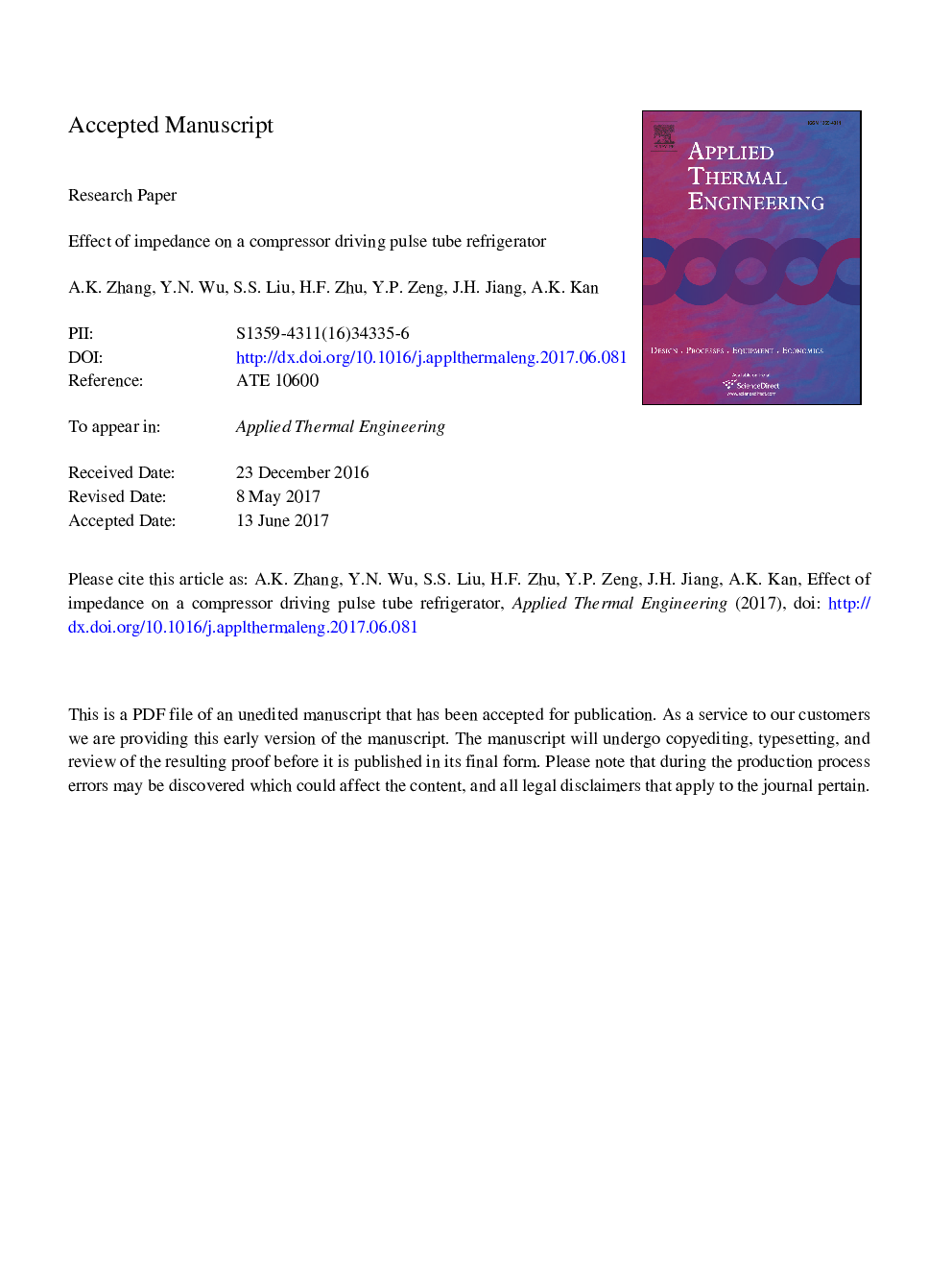| Article ID | Journal | Published Year | Pages | File Type |
|---|---|---|---|---|
| 4990654 | Applied Thermal Engineering | 2017 | 18 Pages |
Abstract
An impedance method is applied in a linear compressor driving a pulse tube refrigerator (PTR) to realize the maximum electric-to-acoustic efficiency. Some basic principles of the compressor are constructed, and its electric-to-acoustic efficiency is analyzed based on force balance and voltage balance equations, which is helpful for confirming how to tune the impedance to increase the performance of the PTR. A cold finger is designed and tested to couple well with the compressor, and the electric-to-acoustic efficiency can be improved by adjusting the pressure and inertance tube length, which have direct influences on the impedance's real and imaginary parts. In addition, some experiments are performed on a prototype refrigerator working with a frequency of 50Â Hz and the experimental results are in good agreement with the theoretical analysis. Finally, the performance map is presented, and the highly efficient PTR can offer a cooling power of 6Â W at 60Â K cold temperature, which will be used to cool an aerospace HgCdTe infrared detector.
Related Topics
Physical Sciences and Engineering
Chemical Engineering
Fluid Flow and Transfer Processes
Authors
A.K. Zhang, Y.N. Wu, S.S. Liu, H.F. Zhu, Y.P. Zeng, Z.H. Jiang, A.K. Kan,
